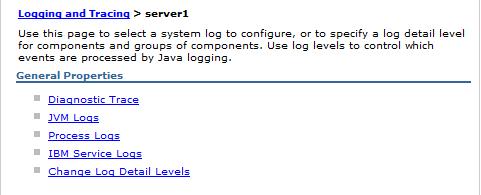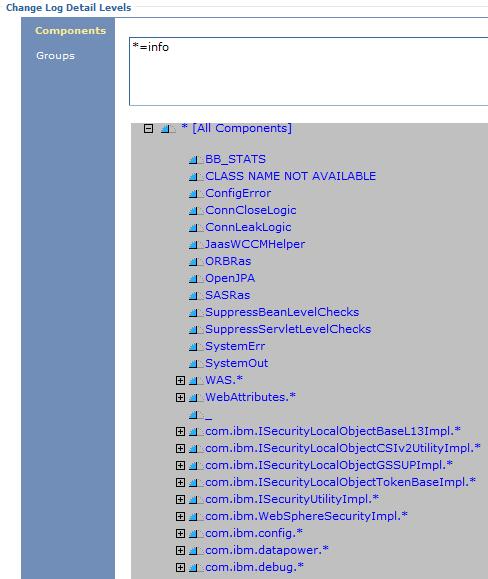Set Java logging using the admin console
Java logging provides a standard logging API for the applications. Before applications can log diagnostic information, specify how you want the server to handle log output and what level of logging you require.
When an application encounters an unexpected condition we might want the application to inform the administrator that the operation failed and why. Application developers might need to gather detailed information that relates to the path of a running application to determine the root cause of a failure that is due to a code bug. The facilities that are used for these purposes are typically referred to as logging and tracing.
Using the admin console, we can:
- Enable or disable a particular log, specify where log files are stored and how many log files are kept.
- Specify the level of detail in a log, and specify a format for log output.
- Set a log level for each logger.
We can change the log configuration statically or dynamically. Static configuration changes affect applications when you start or restart the appserver. Dynamic or run time configuration changes apply immediately.
When a log is created, the level value for that log is set from the configuration data. If no configuration data is available for a particular log name, the level for that log is obtained from the parent of the log. If no configuration data exists for the parent log, the parent of that log is checked, and so on up the tree, until a log with a non-null level value is found. When you change the level of a log, the change is propagated to the children of the log, which recursively propagates the change to their children, as necessary.
- See the Java documentation for the java.util.logging class for a full description of the syntax and the construction of logging methods.
- Set the output properties for a log:
- In the navigation pane, click...
Servers | Application Servers | server | Troubleshooting | Logs and Trace

- Click the name of a system log to configure (Diagnostic Trace, JVM Logs, Process Logs or IBM Service Logs).
- To make a static change to the system log configuration, click the Configuration tab. To change the configuration dynamically, click the Runtime tab.
- Change the properties for the selected log according to the needs.
- Click Apply.
- Click OK.
- In the navigation pane, click...
- Set the logging levels for the logs:
- In the navigation pane...
Servers | Application Servers | server | [Troubleshooting] | Logs and Trace | Change Log Detail levels

- To make a static change to the configuration, click the Configuration tab.
A list of well-known components, packages, and groups is displayed. To change the configuration dynamically, click the Runtime tab. The list of components, packages, and groups displays all the components that are currently registered on the running server.
- Select a component, package, or group to set a logging level.
- Click Apply.
- Click OK.
- In the navigation pane...
- To have static configuration changes take effect, stop then restart the appserver.
Java logging
Log level settings
Loggers
Log handlers
Log levels
Log filters
Log formatters
Use loggers in an application
HTTP error, FRCA, and NCSA access log settings
Logger.properties file for configuring logger settings
Example: Sample security policy for logging